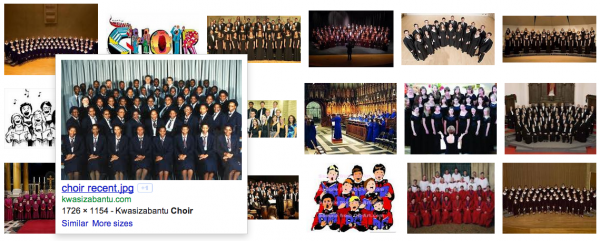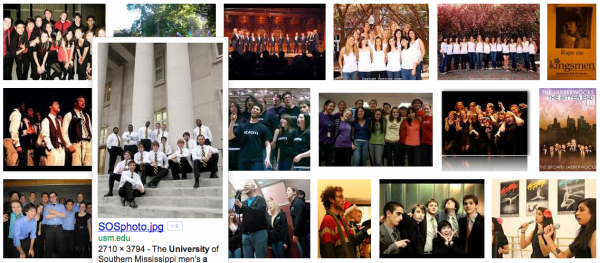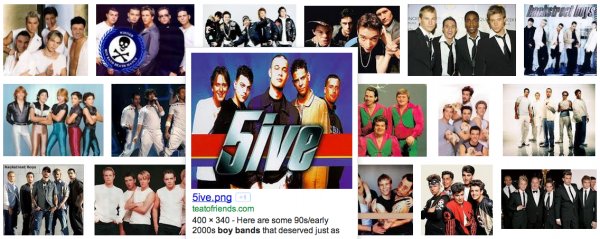Below are the Google image search results for each of the four types of musical groups — choirs, acappella groups, boy bands, and pop stars — representing four points along the axis from collectivism to individualism.
As you look at the images, pay attention to the size and uniformity of each group as well as their postures, costumes, hairstyles, and facial expressions.
Choirs
Acappella groups
(search term: acapella group university)
Boy bands
Pop stars
(search term: lady gaga)
Themes:
- The larger the group, the more individual identities are suppressed. This suppression is necessary for large groups to cohere, and greater suppression means you can support larger and larger groups. There's also a self-selection effect — people join a choir in part because they enjoy subsuming their identities into the identity of the group. (See also Religion, Politics, and Self-Suppression). The other pole of this spectrum (Lady Gaga) represents an extreme, exaggerated individualism. Real people aren't like that, though we find it amusing to watch, perhaps to see what she can pull off or get away with.
- The style of each group reflects the age and traditionalism of the institution it's affiliated with. Older institutions are more conservative — in part because of their age and in part because their conservatism helps them endure. Stereotypically, choirs are affiliated with a religion, acappella groups with a university, and boy bands with a corporation (label). Pop stars are affiliated with a label as well, but we prefer not to think of them that way. We'd rather treat them as artists, as individuals expressing their unique authentic essence. "Manufactured" is the epithet reserved for a pop star whose style is commissioned and scripted too carefully by a label.
- What you do with your body affects how you think and behave (see Minds, Bodies, and Rituals). The dress code, posture, and facial expressions of each group serve as ritual reinforcement of the social order it represents. The physical rigidity and conformity of a choir reinforce the suppression of identity and subsumption into a collective whole characteristic of religion. Meanwhile, the style adopted by Lady Gaga, though primarily an attention-getting device, also provides constant psychological pressure to think and act like a crazy pop star. Anyone who's dressed up on Halloween or worn a mask or wig understands the effect these artifacts can have on behavior. Keith Johnstone explores this effect in great detail in Impro, which looks like a book about the theater, but is really about the human condition. I can't recommend it highly enough. See also the writeups about Impro on Overcoming Bias and Ribbonfarm.
 Melting Asphalt
Melting Asphalt




